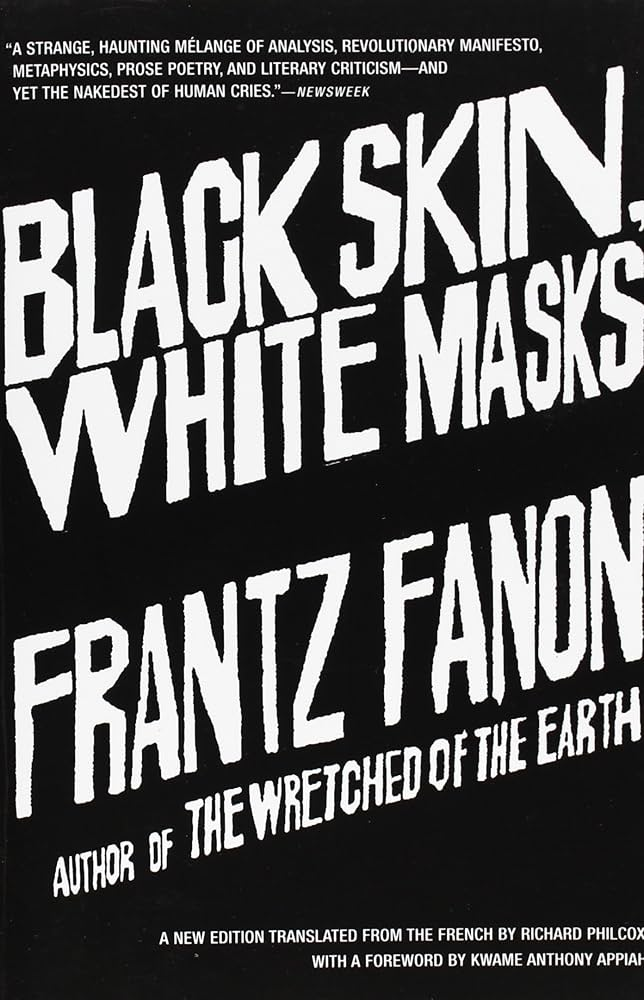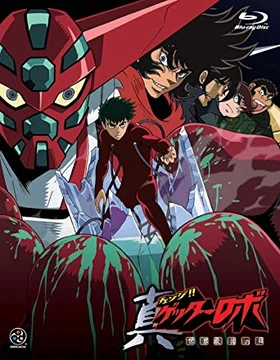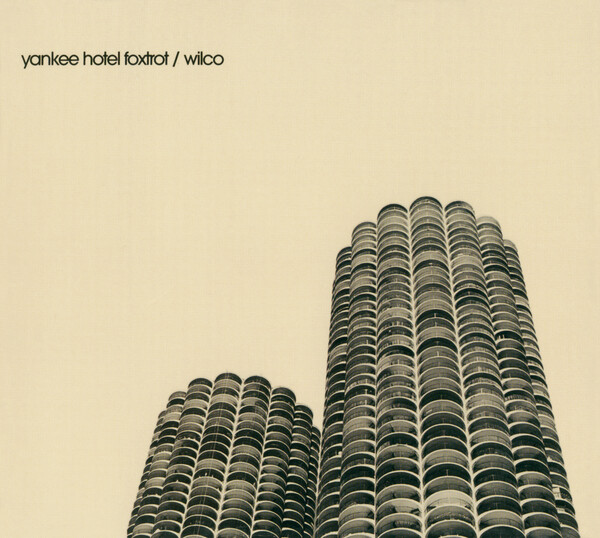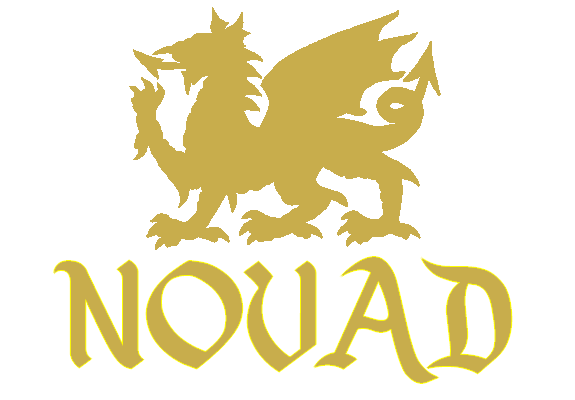
The Shape of the Game
When trying to learn the ins and outs of NOVAD, you'll find that there is a lot you'll already be familiar with. It is a version of the Genesis Game, just like the more common iteration, Sburb. In some universes, NOVAD simply manifests instead. NOVAD involves basically no time travel, so perhaps the truth is that, in realities where time travel is not possible, or at least much harder to bring about, NOVAD comes into existence to work around this limitation. Exactly like that other game, NOVAD exists to perpetuate the life cycle of universes. The players, should they succeed, will create a new universe for their species to inhabit.
A game of NOVAD is generally referred to as a "facet" instead of a "session". The space in which the facet takes place is called the "Great Sphere". The cosmology of the Great Sphere is significantly different from the Medium and will be discussed in more detail below. As in Sburb, each player has a distinct Land floating in this space.
NOVAD is played with between one and nine players, called the Questants by the game when it is feeling particularly dramatic. The players will each bear a unique title, in the format of CLASS of ASPECT, just as Sburb. NOVAD, however, has a different set of nine classes and nine aspects, which you can read about here.
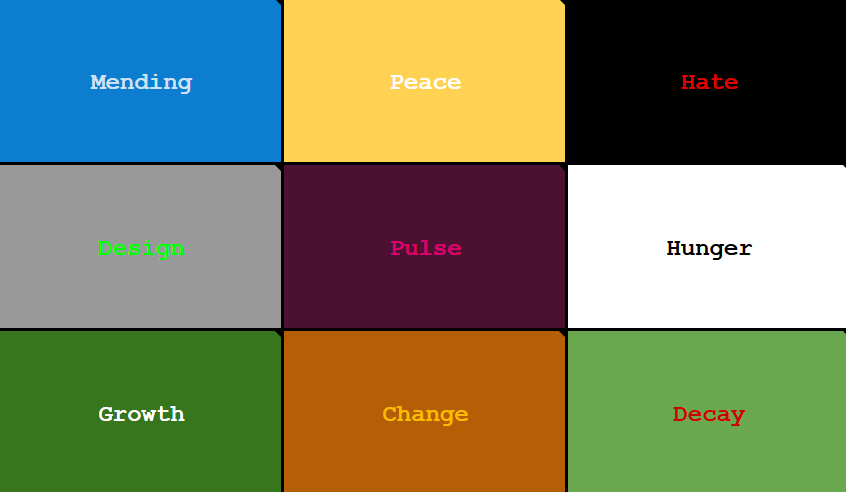
These players will be drawn into NOVAD by a mysterious invitation to a Discord chat, Facebook group, or similar. It also backdoors a little piece of software onto the players' devices which can be run later to begin the game entry process. Players can leave, but as soon as they do, the thread of their fate is severed, and they will no longer be able to participate in the salvation of their species.
Technological and narrative contrivances which exist outside of NOVAD, like echeladders, strife specibi, and fetch modi, all remain the same because they are not a "part" of NOVAD any more than they're a part of Sburb. They're kind of just baked into this medium. If a case comes up where they interact with NOVAD in a different way somehow, I'll make mention of it.
Got it so far? That's good. You already grasp the big picture, but there's a lot of details we glazed over. The following sections will all dive into specific scenes of this cosmic play. If you get lost, check out the glossary for a refresher of the different terms.
The Great Sphere

The Sphere, as mentioned above, is the physical space where the game, or facet, takes place. It is predominated by a series of floating islands in a vast void, one for each player. Just as in Sburb, these are called Lands; since they resemble islands instead of planets, this term is more apropos than ever. Rivers, oceans, and other liquid bodies end at the rims of these islands before pouring off in vast waterfalls. The odd floating rock or mountain either above or just off the side of these Lands is to be expected. Every player's Land will be unique in its own way, with an almost limitless diversity. The commonalities they will share are that all the lands will still have consorts, Gods, and monsters.
The Lands come into existence fully formed with their own histories, just like in Sburb. They emerge in the order the players enter the game, each adjacent to the one before, appearing in a clockwise pattern. Players will be able to build bridges between their Lands later.
Farther out, two other major bodies can be found, the Sun and the Moon, orbiting on the same axis as the Lands. The Moon is tidally locked to the Sun, with one side permanently Light and one side permanently Dark. As with Sburb, NOVAD players have a "spare" body in the form of a dreamself. They will be evenly divided between the Faces of the Moon. If the facet has an odd number of players, then one of them (usually the Paragon, see the classpect sheet) will experience a dreamless sleep at the heart of the Sun instead.
At the common point of rotation for all of these bodies, the central axis of the Sphere, one finds the Navel. The Navel is a bare, asteroid-like rock, pocked like swiss cheese with various tunnels and passages. The heart of this network of caves is host to a massive laboratory complex. This includes the main server of the Sphere's "Central Terminal", which will be discussed later, as well as a crucible where the players must each bring an object from their Land (see the section about the Elemental Gods) in order to synthesize the Egg that will give birth to the new universe.
There will be a stairway in the laboratory that leads down to a glass viewing deck on the underbelly of the meteor. There is a hole here leading directly to the Fundament, which is the semi-solid bed of stars and darkness that the session floats above. What's down there, you ask? Nothing, most of the time. If you survive the fall damage, though, you'll be hunted by the Fundamentals (Fundament Elementals, get it?) which are invisible creatures with an insatiable hankering for flesh. It seems the game does not want you to go out of bounds.
When the game is completed, the players will gather on this viewing deck under the Navel, drop the Egg through, and a keyhole will appear in the Fundament. As the Egg passes through, it will grow into a massive crab (instead of a frog) with a starscape for its back and waterfalls running down its legs, though the keyhole will remain atop its carapace. Looking through, players will see a new big bang take place, followed by universal formation and expansion, fast-forwarded. Once it slows down and is done "cooking", the players can likewise jump through the keyhole, leaving the Sphere behind. The remnants of the Sphere, except for the crab in its bed of starlight, will fade away, digested and then probably recycled into the base components of a new facet elsewhere. Accordingly, it's not uncommon to find "leftovers" from previous facets every so often.
The Sun isn't much to talk about - players will usually not visit it unless one of them has to be dreaming in its heart. There's nothing on its surface (which is about the temperature of a particularly hot bath) and the player who dreams there will have access to a teleporter-like device that leads them out when they wake. The Moon will be gone into detail extensively later on. The Lands will ultimately look very different from player to player, but some more details will be in the sections about the Elemental Gods and Game Entry. Speaking of, I think the latter is next.
Entering NOVAD
So, you and your buddies have received a NOVAD invitation. I must offer you my condolences, because this means you have been chosen to survive the end of the world! You may think that this is a blessing, but that's because you haven't had to do it yet.
After a bit of lead-up time in which the players will become acquainted and realize they have a bit of a video game on their hands, the Escape will begin. There are no server-client connections as there would be in Sburb. Players will instead connect to the Sphere's Central Terminal, which will start to run the game. The player is first greeted by a rather retro-looking text prompt game interface with a pixely dragon sitting in the bottom corner, its speech bubbles providing the prompts. Similar to the little "who are you" quizzes found at the beginning of certain computer RPGs from days of yore, it will prod the players with the following set of questions:
- What is your name? (Name recognized. We will weigh the stoutness of your heart before your journey can begin. Let us get to know you.)
- While in the castle of your employer, you hear two voices come from around the bend. It is clear you have not been noticed. You recognize the voice of your lord as he says that he intends to invade your home village, which rests in another lord's demesne not far away. You owe your lord your fealty and your life, because he saved you from a monster when you were young, but it sounds as if he intends to wipe out your village root and stem. What do you do?
- You and your party are on the road when an argument breaks out between the Sage and the Hermit. The Sage contends that the Hermit tipped out all your food stores, while the Hermit contends that the spill occurred when the Sage tripped him. Do you trust the word of the Sage, who has been useful to your party so far but liberal with the truth, or the Hermit, who has been blundering every step of the way but is an honest person? What do you do?
- Given the choice, would you choose to be:
A. a healer
B. a scholar
C. a warrior
D. a trickster
Once the questionnaire is completed, the dragon thanks the player and then flies out of the screen in a tiny blur of blue light. It will wheel around until it finds an unoccupied spot of wall, whereupon it will fly in and "infect" the structure of the house. At the spot where the infection begins, a computer interface called the "Festerminal" will suddenly grow. It resembles a computer screen with metal vines or limbs sprouting out of it and burrowing into the wall.

The Festerminal will present itself as a sort of gatekeeper, telling the player that they must accomplish a few tasks in order to charge the terminal up and start their adventure. There will be somewhere between 1 and 5 of these (fewer, larger tasks, or more, smaller tasks). The tasks will all be different per individual player, as the Festerminal's choices will be affected by how the player answered their questionnaire. The Festerminal will prove to be able to manifest hard-light physical holograms to set up these tasks, which will usually force the player to go here and there around their house, whether it's retrieving some kind of item, clearing an obstacle course, or fighting some kind of creature. The possibilities are endless, really.
Each time the player completes a task, the terminal will visibly grow brighter and sink its roots further into the house. Finally, once the last task has been completed, it will glow brightly and flash a message saying "Adventure awaits..." The player will usually be knocked unconscious as their entire dwelling is transported to the Sphere.
From this point on, your adventure will take place in the Great Sphere, and it is not likely you will ever return to your home planet again. An impending apocalypse will become clear as soon as the players are first invited, taking the form of first all the color slowly starting to drain out of the world around them and then an impending stellar cataclysm in the form of a supernova. Players will, of course, need to complete the Escape before this occurs.
The Festerminal will continue to be important within the game, which is what our next section will discuss.
Game Progression
You will probably notice that at no point in game entry was a kernelsprite mentioned. NOVAD does not have sprites, orbs N-fold, prototypes, or anything related to these. Nor does it have gates you must build your house up to. Progression and the end-game struggle against your enemies will both take a much different form.
Upon waking, the player will of course notice that the view outside their windows is different. They will also notice that the Festerminal is still there, and it will read out a welcome message that goes more or less as follows, perhaps tweaked slightly for the player's circumstances:
"Welcome to the Great Sphere! These are only the first steps of your great journey. Your old world is dying, but do not panic! There will be another at the road's end. Explore your Land carefully, for there are monsters about."
The player is then unleashed to have free reign in exploring their new Land. Players will discover hints about their mythological role (classpect), as well as the identity and role of their Elemental God, but both of these things really won't clear up until somewhat later. Progression in this respect is similar to Sburb, in that information is drip fed to the player. In the absence of a sprite, a player can instead type queries into the Festerminal, which connects to the Sphere's Central Terminal. It will withhold certain information until the time is right.
Since I've demured so far, the time seems appropriate for us to talk about what the Central Terminal is. Although it stands in for both the player's machines and sprite, since neither exists in this game, it is more analogous to Skaia in its core function. It is the central processor of the facet, running all of its events, minor NPCs, and systems. As previously discussed, its main server rests in the Navel. There will be smaller computer access points scattered throughout the Sphere allowing players to interface with and query the Terminal. There is more to the Terminal than meets the eye, but I'll let that remain a mystery for now.
The distinction of "minor" NPCs probably also merits a quick aside. These are minions, monsters, and other adversarial/neutral creatures. Other, "major" NPCs can control their own destinies in the same way that the player can. These include the Gods and the Lithrans (see the section on Noonwy and Duskwen below). "Minor" NPCs behave more like automata. We've digressed, however, and must go back to discussing game structure.
Game progression can be said to follow a storybook pattern, and the Questants are supposedly filling the role of fairy tale heroes. Every so often, whether through some kind of personal event, character moment, or major progression in your Land's quest, you'll advance to a new Act. All of these Acts have a number and a subtitle, and as you advance to a new Act, new parts of your land and your quest become unlocked.
At about the midway point of the facet, all the players take an "Intermission" between their Acts where the ability to build bridges between the Lands is finally unlocked. This "crossover event" requires the players to do a grand tour of the Lands in the Sphere, gathering different types of Anima from each in order to construct a full ring of bridges. As usual, where this Intermission falls will vary depending on how long it takes each player to advance to that point in their quest. The number of Acts is also not consistent, but the final Act for each player will usually revolve around the player's Evolution or a final confrontation with an Elemental God.
What's Evolution, you ask? It's god tiering. No mystery here. It works more or less the same way as it does in Sburb, with a bed and everything. If this bed is destroyed or your dream self dies, there are, as usual, workarounds. These can be discussed case by case.
Alchemy still exists, and is performed through the Festerminal, which has slots for punching and accepting cards. It will simply materialize the new object next to the player. Alchemy is one of several new features on the terminal which unlock as soon as the player enters the game. Among these other features is a more rudimentary house-building tool which is mostly meant to shore up your dwelling and fortify it against monsters. It's more like a castle-building sim than The Sims. Players of NOVAD end up building a diverse array of different castles, forts, and even towns around their houses using this feature.
Both building and alchemy require a sacrifice of Anima. Anima replaces grist, but can also be thought of as your health bar. All creatures in the Sphere - NPCs and players - carry Anima and drop it when they die. Your Anima cap increases as you ascend your echeladder. Any Anima that goes over this cap will simply drop on the floor as a vial filled with brilliantly glowing fluid, the color of which varies depending on which Land or other celestial body the lifeform who shed it belonged to. The colors found on different Lands vary, but may be the player's text color. The NPCs residing on the Light side of the moon shed white Anima, and the Dark side black.
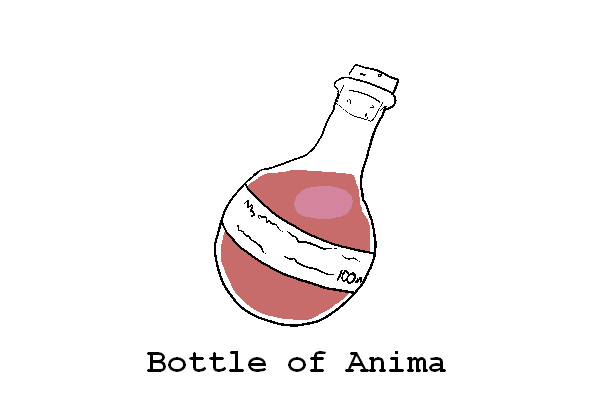
Since this is your vitality meter, spending it on alchemy or fortifying your house actually hurts a little bit. You have to give of yourself to change the world around you; a fair price, don't you think? It's not debilitating unless you overdo it, however, and you'll be fine as long as you stick to things "at your level". Later on, class abilities also expend Anima, but once you are Evolved the cap is much higher.
This broad overview glazes over some details by necessity, because this part of the game is meant to be highly flexible. NOVAD has a largely fairy tale, sword-and-sorcery vibe, but Lands are totally allowed (and encouraged) to embrace or contrast this aesthetic as much as you want. Go nuts. Show nuts. Whatever. Most of this stuff will probably be decided on and discussed with your game runner in the moment anyway.
There is an important part of the facet and player progression that still needs to be gone over, namely the Elemental Gods and their role. That comes next.
The Elemental Gods
It may be helpful to think of the Elemental Gods as being, first and foremost, equivalent to Sburb's Denizens. There are some important differences, however. Like Denizens, Elemental Gods are likewise named after important mythological creatures. Additionally, they will have "God of [Player's Aspect]" appended as a sort of title at the end of their name. Although the player's Land is the domain and dwelling place of their corresponding God, the Gods still have influence that spans the entire Sphere. For example, while the session's Hate player will have the closest dealings with the God of Hate, the God of Hate would still influence Fury, Negativity, and Righteousness not only in all the players of the facet, but the sentient NPCs as well. Gods may even leave their Lands every so often.
Creating a universe is the primary goal of NOVAD, but the next most important goal, supplementary to the first, is to wrest dominance of one's aspect away from the Elemental God of one's land. This can be seen as a cosmic tug of war. Some Gods may cooperate when met with negotiation or bargaining, and some few may even want to help you. However, most will jealously guard their aspect from its new destined god-to-be: you. This struggle for dominance (say it with me) varies greatly depending on the individual player's journey.
Bargaining with, subduing, or slaying the God is also necessary in order to obtain a Land Artifact. All players' Land Artifacts must be brought to the Navel to synthesize the Egg later on. Each Land has a unique Artifact which will usually glow in the player's text color. They vary in size, but are usually between the size of a hand and the size of an average person.
As the lords of the Lands, the Gods will also spawn legions of enemies with which they will oppress the Lands' consorts. Unlike Sburb, these enemies are not similar between Lands. Each God will have a unique army of fiends and monsters, though all the monsters on a Land will usually share common themeing or names. The makeup of these legions is decided by the player.
Once a God loses its sway over its aspect, the remaining monsters will flee, fade away, or else fall into the service of the player, who for all intents and purposes is the new God of that aspect.
Thus concludes our look at the Elemental Gods and the players' struggle with them. Our final main section here will talk about the Moon, because a lot of important stuff goes down there.
Noonwy and Duskwen
The different Faces of the Moon are split into two Nations, Duskwen on the Dark Face and Noonwy on the Light. The native inhabitants of the Moon are visually and culturally very similar to Carapacians, but are known here as Lithrans. On the Light Face, the twin rulers of Noonwy preside over a realm dedicated to the principles of Order. Theirs is a world of white stucco, alabaster, and ordered calm. Geographically, it is dominated by winding river valleys, small mountains, and many tall towers linked by bridges. Although the twin monarchs' rule is peaceful, it's inflexible, and threats to the peace are not tolerated.
On the Dark Face, the residents of Duskwen are proud to call themselves the children of Chaos. Their dense, lantern-lit forests and mountain top castles echo at all times with the howls of wolves, and the few paths cutting through the wilderness are host to trade wagons, musicians, and probably a fair few scared players. The castles are held by a cadre of five barons, some of whom are nicer than others. They all meet in council on occasion; sometimes they even agree on something.
There's probably something worth mentioning about the Duskwenders: they're fucking werewolves. Carapacian werewolves, that is; think Bec Noir in terms of facial appearance, but rather more hulking and with less conscious thought when they're in the throes of their curse. Most of the time they're just normal Lithrans with some behavioral quirks, but when they get really mad or are threatened, the transformation takes place.
Between the two kingdoms, on the thin strip that's neither day nor night, lie the Twilines. These are a sort of no-man's-land characterized by trenches, fortresses, skirmishes, and generally a state of cold war. The two Nations cannot trust one another, and will come into conflict unless the players actively work to avoid it.

If not managed carefully by the players, one of two no-win conditions may arise for the facet from these Nations. When Noonwy predominates, the Great Sunrise will begin. During this event, Duskwen will be overwhelmed and its inhabitants enslaved. The Noonwytes will hunt for the Land artifacts and destroy them, rendering the Egg infertile. Conversely, if Duskwen is allowed to predominate, the Hour of the Wolf will arrive. The Duskwenders will lose themselves to the throes of their curse and essentially become animals. They will overrun Noonwy and devour the inhabitants before spreading across the facet and consuming everything else.
In other words, the players are basically fucked unless they manage to get these Nations to cooperate, or else just keep them from fighting. There is no Reckoning in NOVAD, so this brewing crisis stands in as the ticking clock the players must beat.
Finally...
This brings us to the end of the introductory crash course on NOVAD. Good luck with the end of the universe! And happy storytelling!
(If by some miracle you've found this page and want to use NOVAD for a fansession or something, just drop me a message on one of my socials to let me know and I'll probably give you a thumbs up.)
